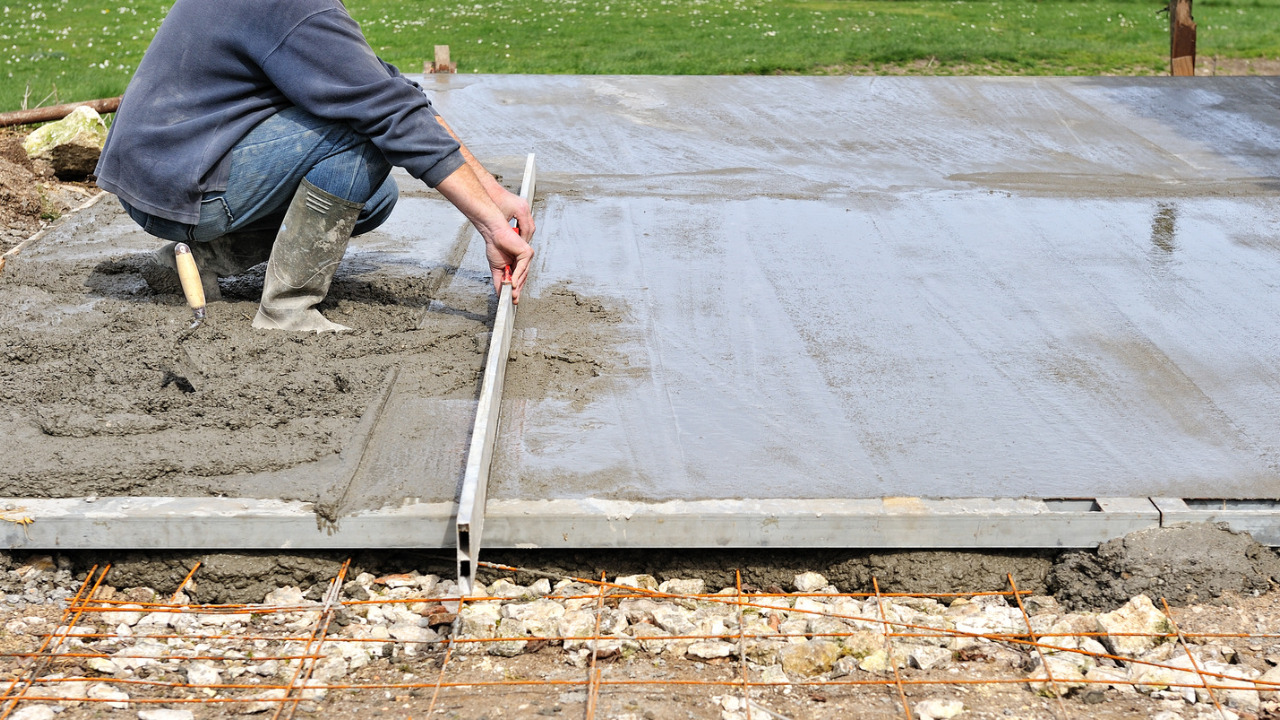Can you pour a Concrete Slab over the grass? You are always asking yourself this question. Here are some things about it that you should know. Concrete is inexpensive, adaptable, and simple to pour. It requires little care and will last for many years.
Yes, it is possible to pour concrete straight over already-existing grass, but to prolong the life of your slabs, some preparation work must be done first.
Even though concrete appears sturdy, if the correct preparation work isn’t done, time and the environment may eventually lead it to break considerably sooner than anticipated and leave concrete remains.
Most concrete contractors use a coarse and fine aggregate blend for a compactable base that will be secure for settlement and drainage. The best base materials for concrete slabs are coarse aggregate and crusher run, a mixture of crushed stone and stone dust.
Table of Contents
Reasons For Preparing Grass First Before Pour A Concrete Slab
Uneven foundations
Subsidence from dead grass beneath the concrete slab will happen. As a result, the ground will begin to sink, dragging any neighboring foundations. Subsidence can, in extreme circumstances, cause walls and floors to move, resulting in cracks and weakened structures.
Drainage Problems
Pouring concrete directly onto soil and grass without sufficient drainage could result in moisture pooling and erosion, which causes slabs to sink and break.
Because concrete is impenetrable, water cannot drain through it, causing your lawn to grow soggy. This is less of a problem in the summer because the water can evaporate, but in the winter, the water won’t be able to move and will eventually get stagnant.
Grass Growth
Regrowth through concrete cracks could result from roots remaining under your slab. The grass might discover microscopic fractures in the slab and push its way through, creating a much larger split, even if it isn’t strong enough to break the concrete by itself.
Make A Base For Concrete Slab To Settle
To create a concrete slab base, you can utilize two different types of materials. Gravel and sand are promising materials for a level and sturdy base for your concrete slab since, unlike grass, they are unaffected by temperature variations.
- Gravel
- Sand
Advantages Of Using Gravel As Base For Concrete Slab Over Grass
- Gravel will level off an uneven surface caused by grass and dirt so that concrete can be poured on a level base.
- Crushed stone is used to create a gravel base, and the holes allow water to drain through.
- Drainage is crucial in gardens to keep your lawn and flowerbeds from becoming soggy.
- Your garden’s drainage will be improved by poking three cm-sized holes in the yard around your concrete slabs. Because the ground and foundations change over time, concrete is vulnerable to cracking over extended periods.
- A gravel base will boost longevity while lowering the likelihood of this happening.
Benefits Of Using Sand As Base For Concrete Slab Over Grass
- Sand is an inexpensive resource frequently used in buildings, so it is reasonably priced.
- The price decreases as you purchase more.
- Before purchasing your sand, inquire whether any neighbors, family members, or acquaintances require some. By buying in bulk, you can save money.
- Sand is made of shells, corals, and decomposed rock, all resistant to corrosion and deterioration.
- Sand is composed of loosely spaced particles, allowing water to travel through and drain quickly.
- This property of sand allows water to soak through.
Steps For Pouring Concrete Slab Over Grass
Follow the steps below to lay the perfect concrete slab over your grass.
- Before pouring concrete, remove any grass from the area with a shovel. Remove any underground obstructions like rocks or roots that could hinder your endeavor.
- Level the surface by adding sand or gravel and compacting it afterward.
- Spread polyurethane plastic sheeting to prevent moisture from seeping up from the bottom.
- Set up the formwork, which is fancy talk for putting up a wooden box barrier to retain the concrete in the desired shape.
- To prevent spills from getting into your lawn, spread plastic sheeting or tarps around the formwork.
- Place a layer of rebar underneath the concrete to give it something to cling to and provide it with stiffness and strength.
- Completely cover the rebar or steel, and pour the mixture into the desired form on top of the dirt you scraped from the ground. It could be at least five inches thick.
- To allow the concrete to be thoroughly set, wait 24 to 36 hours after it has dried before walking or driving over it.
Preventive Measures For Concrete Slabs
Unfortunately, rainfall is insufficient to maintain your slab’s aesthetic quality. Grease and filth that accumulates on concrete can be removed once or twice a year with a moderate detergent. To prevent stains and discoloration, sweep the area with a power washer after rinsing.
Check your slabs regularly for little cracks that may be fixed with a concrete repair product before they get too big and cause problems like movement. Your concrete slabs’ surface will get UV protection and protection from surface damage if you use a sealer.
The sealant is frequently used to resist water to prevent your concrete from getting wet during rainy seasons. Avoid using corrosive chemicals that could damage your slabs, especially those that contain ammonium nitrates and sulfates, because they have a history of attacking and destroying concrete.
Conclusion
Removing all grass and losing debris before pouring is recommended, even though some projects give you a little leeway by keeping grass underneath your concrete.
By acting upon this, you can guarantee that your appearance will be even, smooth, and crack-free for many years without worrying about costly or time-consuming maintenance. Pouring concrete on grass is something that you have to weigh the pros and cons before considering carrying out such a project.





